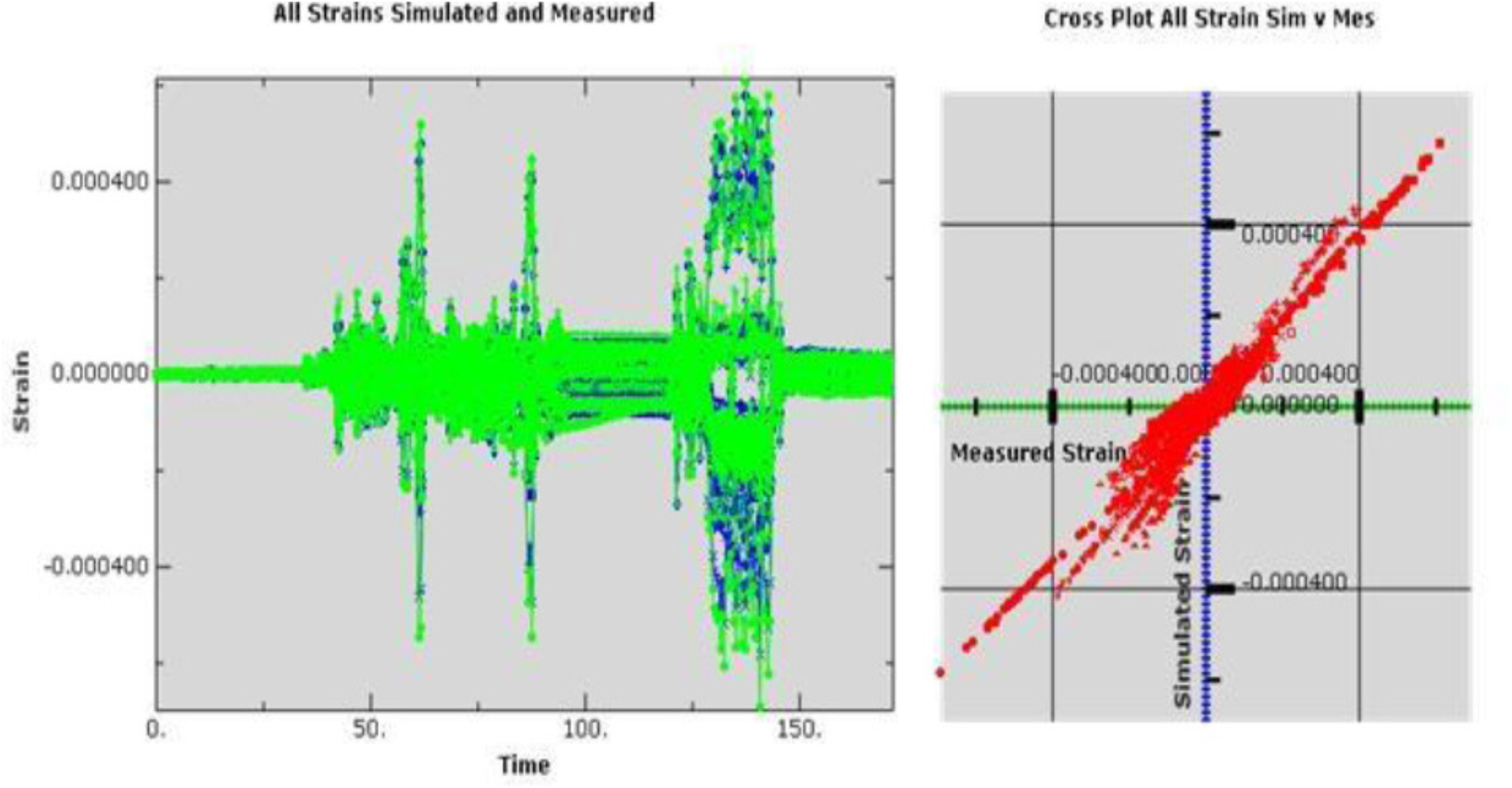Editor’s Pick: Correlate Measured Loads with FEA Models

True-Load simulations use FEA models and real-world data to enable engineers and analysts to determine the optimal locations to site strain gauges, back-calculate loading and explore dynamic loading of structures. Left: Measured data is green and simulated results are blue. Right: The vertical axis represents simulated strain data. The horizontal axis is measured strain. Image courtesy of Wolf Star Technologies LLC.
Latest News
September 5, 2018
 Dear DE Reader:
Dear DE Reader:
Some jobs seem to take forever. You swear that computers should be good at them but you haven't found the tools to do it. Here's something that sounds like it could kibosh that business.
Wolf Star Technologies says its True-Load, True-QSE and True-LDE load calculation tool sets are “first to market solutions.” The gist of it is that these tools can help you understand dynamic loading of structures and develop load cases from your finite element analysis (FEA) models using measured strain data.
The deal is that these guys aren't talking about taking a couple of weeks to match data from a pair of strain gauges at a single point in time. They're talking about matching multiple load cases and back-calculating load time histories in a Milwaukee minute. More about time in a bit.
At a Glance: True-Load
- Load calculation toolsets for understanding the dynamic loading of structures.
- Enables FEA-based fatigue analyses with correlated loading events.
- Works with multiple load cases; back-calculates loading profiles; interactive processes run quickly.
- Lets users interrogate any point in the model for strain, stress or displacement.
- Can include the effects of pre-load on all results; works with most FEA solutions.
First, what this means is that you can use True-Load to determine the optimal spots on a physical part to plunk down a bunch of strain gauges to get real-world data. Once you collect that strain data, you read it into True-Load. It then calculates load time histories that, they say, typically match the measured strain to within 2% at all points in time.
Now bring the True-QSE (Quasi-Static Events) post-processor into the brew. Together with True-Load, it enables you to interrogate any point in the model for strain, stress or displacement. It works by attaching user-defined scaling functions to your FEA solution. It leverages linear superposition principles to interact with FEA models. It'll create plots of nodal and elemental functions. It can create full-field results in a new FEA database.
For its part, the True-LDE (Linear Dynamic Events) post-processor lets you investigate your FEA model for responses to user-defined excitations. You can create operating deflection shapes and peak value plots. Intriguingly, you can include the effects of pre-load in any of the calculations. This feature can interface with your FEA-based fatigue solvers as well.
But what about that Milwaukee minute? Wolf Star reports that the interactive True-Load processes generally need only a few minutes to determine the optimal strain gauge placement and a few more minutes to back-calculate loading profiles.
Start learning more about True-Load from today's main write-up. Be sure to read the “Front-End Loader Linkage Durability Analysis” article to see how you can put this solution set to work. This could take a load of work off your plate.
Thanks, Pal. – Lockwood
Anthony J. Lockwood Editor at Large, DE
Subscribe to our FREE magazine, FREE email newsletters or both!
Latest News
About the Author
Anthony J. Lockwood is Digital Engineering’s founding editor. He is now retired. Contact him via [email protected].
Follow DE





